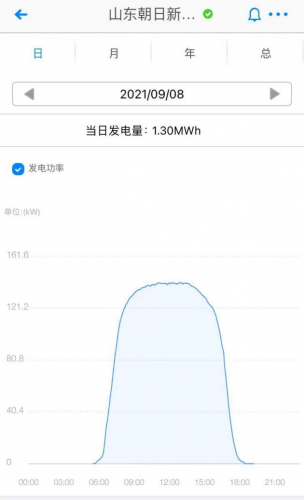Actual Data Analysis of A Dual Axis Solar Tracker Project
With the development of technology and the reduction of cost, solar tracking system has been widely used in various photovoltaic power plant, the full-automatic dual axis solar tracker is the most obvious one in all kinds of tracking brackets to improve power generation, but there is a lack of sufficient and scientific actual data in the industry for the specific power generation improvement effect of dual axis solar tracking system. The following is a simple analysis of the power generation improvement effect of the dual axis tracking system based on the actual power generation data in 2021 of a dual axis tracking solar power station installed in Weifang City, Shandong Province, China.

(No fixed shadow below dual axis solar tracker, ground plants grow well)
Brief introduction of the solar power plant
Installation location: Shandong Zhaori New Energy Tech. Co., Ltd.
Longitude and latitude: 118.98°E, 36.73°N
Installation time: November 2020
Project Scale: 158kW
Solar panels: 400 pieces of Jinko 395W bifacial solar panels (2031*1008*40mm)
Inverters: 3 sets of Solis 36kW inverters and 1 set of Solis 50kW inverter
The number of solar tracking system installed:
36 sets of ZRD-10 dual axis solar tracking system, each installed with 10 pieces of solar panels, accounting for 90% of the total installed capacity.
1 set of ZRT-14 tilted single axis solar tracker with 15 degrees inclination, with 14 pieces of solar panels installed.
1 set of ZRA-26 adjustable fixed solar bracket, with 26 solar panels installed.
Ground conditions: Grassland (back side gain is 5%)
Solar panels cleaning times in 2021 : 3 times
System distance:
9.5 meters in east-west / 10 meters in north-south (center to center distance)
As shown in following layout drawing

Overview of power generation:
The following is the actual power generation data of power plant in 2021 obtained by Solis Cloud. The total power generation of 158kW power plant in 2021 is 285,396 kWh, and the annual full power generation hours are 1,806.3 hours, which is 1,806,304 kWh when converted into 1MW. The average annual effective utilization hours in Weifang city is about 1300 hours, according to the calculation of 5% back gain of bi-facial solar panels on grass, the annual power generation of 1MW photovoltaic power plant installed at fixed optimal inclination angle in Weifang should be about 1,365,000 kWh, so the annual power generation gain of this solar tracking power plant relative to power plant at fixed optimal inclination angle is calculated to be 1,806,304/1,365,000 = 32.3%, which exceeds our previous expectation of 30% power generation gain of dual axis solar tracking system power plant.
Interference factors of power generation of this dual-axis power plant in 2021:
1.There are fewer cleaning times in solar panels
2.2021 is a year with more rainfall
3.Affected by the site area, the distance between systems in the north-south direction is small
4.Three dual axis solar tracking system are always undergoing aging tests (rotating back and forth in the east-west and north-south directions 24 hours a day), which has adverse effects on the overall power generation
5.10% of solar panels are installed on adjustable fixed solar bracket (about 5% power generation improvement) and tilted single axis solar tracker bracket (about 20% power generation improvement), which reduces the power generation improvement effect of dual axis solar trackers.
6.There are workshops in the west of power plant that bring more shadow, and a small amount of shadow in the south of Taishan landscape stone (after installing our power optimizer on solar panels that is easy to be shaded in October 2021, it significantly helpful to reduce the impact of shadow on power generation), as shown in the following figure:


The superposition of the above interference factors will have a more obvious impact on the annual power generation of the dual axis solar tracking system power plant. Considering that Weifang city, Shandong Province belongs to the third class of illumination resources (In China, solar resources are divided into three levels, and the third class belong to the lowest level), it can be inferred that the measured power generation of the dual axis solar tracking system can be increased by more than 35% without interference factors. It obviously exceeds the power generation gain calculated by PVsyst (only about 25%) and other simulation software.
Power generation revenue in 2021:
About 82.5% of the power generated by this power plant is used for factory production and operation, and the remaining 17.5% is supplied to the state grid. According to the average electricity cost of this company of $0.113/kWh and the on-grid electricity price subsidy of $0.062/kWh, the power generation income in 2021 is about $29,500. According to the construction cost of about $0.565/W at the time of construction, it only takes about 3 years to recover the cost, the benefits are considerable!

Analysis of dual axis solar tracking system power plant exceeding theoretical expectations:
In the practical application of dual axis solar tracking system, there are many favorable factors that cannot be considered in software simulation, such as:
The dual axis solar tracking system power plant is often in motion, and the inclination angle is larger, which is not conducive to dust accumulation.
When it rains, the dual axis solar tracking system can be adjusted to an inclined angle which is conductive to rain washing solar panels.
When it snows, the dual axis solar tracking system power plant can be set at a larger inclination angle, which is conductive to snow sliding. Especially in sunny days after cold wave and heavy snow, it is very favorable for power generation. For some fixed brackets, if there is no man to clean the snow, the solar panels may not be able to generate electricity normally for several hours or even several days because of snow covering solar panels, resulting in great power generation losses.
Solar tracking bracket, especially dual axis solar tracking system, has higher bracket body, more open and bright bottom and better ventilation effect, which is conducive to giving full play to the power generation efficiency of bi-facial solar panels.
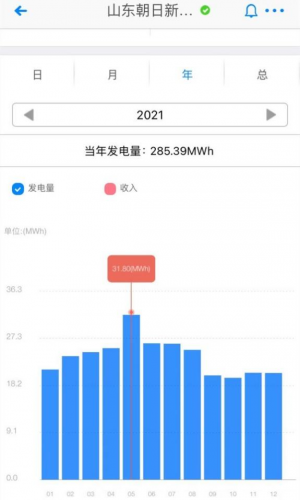
The following is an interesting analysis of power generation data at some times:
From the histogram, May is undoubtedly the peak month of power generation in the whole year. In May, the solar irradiation time is long, there are more sunny days, and the average temperature is lower than that in June and July, which is the key factor to achieve good power generation efficiency. In addition, although the solar radiation time in May is not the longest month in the year, the solar radiation is one of the highest months of the year. Therefore, it is reasonable to have high power generation in May.
On the 28th of May, it also created the highest single-day power generation in 2021, with a full power generation exceeding 9.5 hours
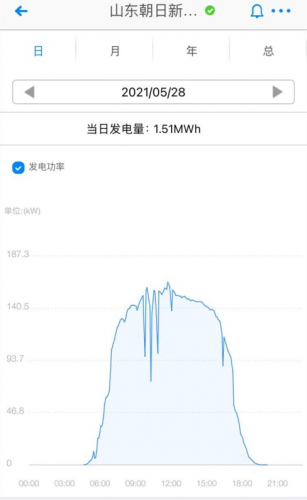
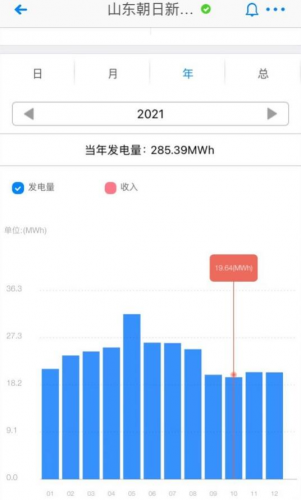
October is the lowest month of power generation in 2021, which is only 62% of the power generation in May, this is related to the rare rainy weather in October in 2021.
In addition, the highest power generation point in a single day occurred on December 30, 2020 before 2021. On this day, the power generation in solar panels exceeded the rated power of STC for nearly three hours, and the highest power could reach 108% of the rated power. The main reason is that after the cold wave, the weather is sunny, the air is clean, and the temperature is cold. The highest temperature is only -10℃ at that day.
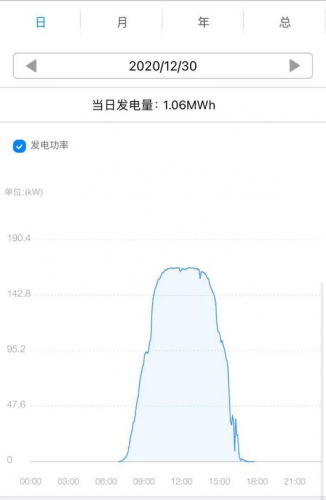
The following figure is a typical single-day power generation curve of dual axis solar tracking system. Compared with the power generation curve of fixed bracket, its power generation curve is smoother, and its power generation efficiency at noon is not much different from that of fixed bracket. The main improvement is the power generation before 11:00 am and after 13:00 pm. If the peak and valley electricity prices are considered, the time period when the power generation of the dual axis solar tracking system is good is mostly consistent with the time period of the peak electricity price, so that its gain in electricity price income is more ahead of the fixed brackets.
